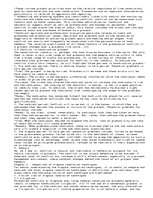Chapter 1 Introduction
Modern commercial projects are increasingly complex, resulting in complex contract documents. Complex project can likewise often result in complex disputes, which predominantly arise from the intricacy and magnitude of the work, multiple prime contracting parties, poorly prepared and/or executed contract documents, inadequate planning, financial issues, and communication problems. Any one of these factors can derail a project and lead to complicated problems, for instance, litigation or arbitration, increased costs, and a breakdown in the parties' communication and relationship.
In order to achieve successful project, contractual parties within project should form a society with a complicated set of interrelated relationships requiring cooperation and collaboration to coordinate time, resources, and communication. The main goal of all parties involved in a project is that the project be successful, with success being defined as a project completed within the original time span and costs. [1] As Diekmannet argued, the success of a project depends on a number of variables--not the least of which is how the various organizations approach problems and conflicts. [2] However, the successful project goal is not achieved as often as the contractual parties would like. There are many reasons for this occurrence, not the least of which is the current adversarial nature of the industry and its methodologies for resolving disputes.
…







